Tested: Best EV Chargers for 2023
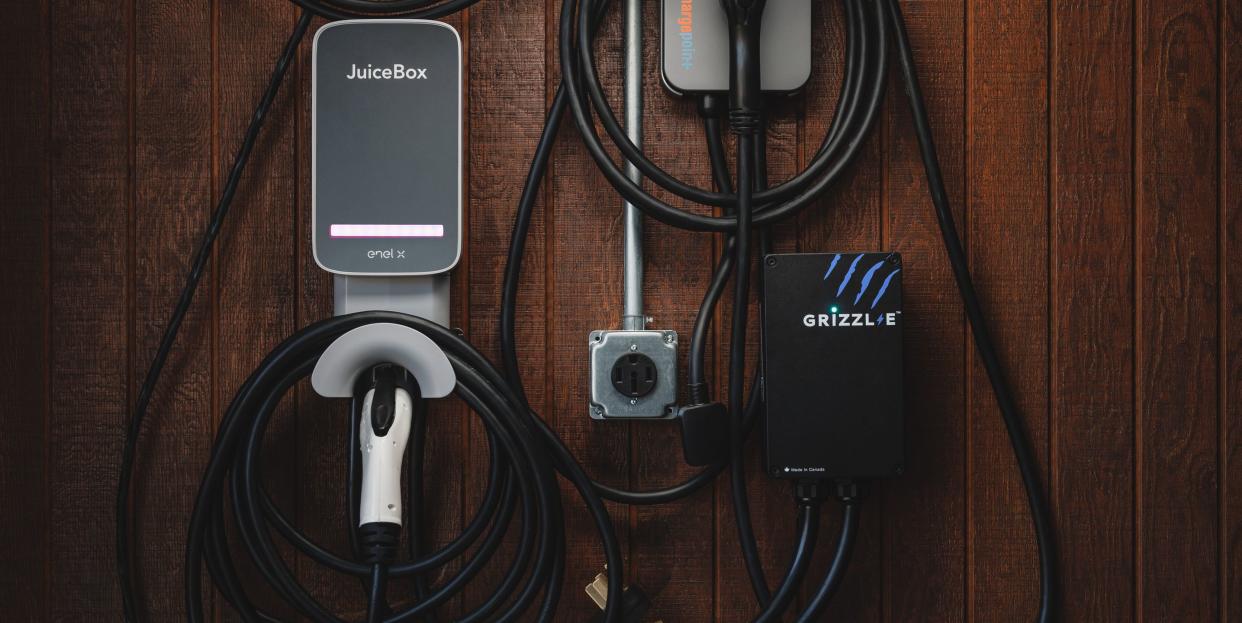
"Hearst Magazines and Yahoo may earn commission or revenue on some items through these links."
Okay, so you bought your first electric vehicle. Now what? There are a number of ways EV ownership will be different than that of a vehicle with an internal-combustion engine, but a big one you need to figure out immediately is charging.
First, you want to be charging at home as much as possible. This has two significant benefits: Charging can be accomplished when the vehicle is otherwise parked, and home charging is substantially cheaper (roughly one-third the cost) of DC fast-charging.
There are three major factors to consider: the output of the household circuit you're connecting to, the output of the EV charging equipment, and the rate of charging that your vehicle can handle.
We've gathered five charging options to connect your house to your electric car that range in price from $300 to $1000, all of which are compatible with any EV on sale today. The more expensive ones have Wi-Fi connectivity, which gives the ability to monitor charging, receive alerts, and control the unit via an app. Many of these have different variants (hardwired or plug, different output capabilities, and varying cord lengths) with slightly different prices.
Our Top Picks
Best Overall: JuiceBox 40
Best on a Budget: Lectron 32 Amp
Also Great: ChargePoint Home Flex
Best Overall EV Charger: JuiceBox 40

JuiceBox 40 Smart Electric Vehicle (EV) Charging Station with WiFi
$649.00
amazon.com
Michael SimariOutput capability: 40/32/24/16/12/6 amps (9.6/7.7/5.8/3.8/2.9/1.4 kW)
Cord length: 25 feet
Cord management: built-in
The JuiceBox and the ChargePoint are far ahead of the rest, as the most feature-rich, Wi-Fi-enabled Level 2 chargers. One small advantage for the JuiceBox is that it is offered in a number of different output levels, and it's quite a bit cheaper at the moment too. In addition to the 40-amp version that we tested, there's a 48-amp version that matches the Tesla Wall Connector for the highest output of this group, or there's a 32-amp version that costs slightly less (since we were using a 40-amp circuit, we couldn't take advantage of the JuiceBox 40's full output anyway).
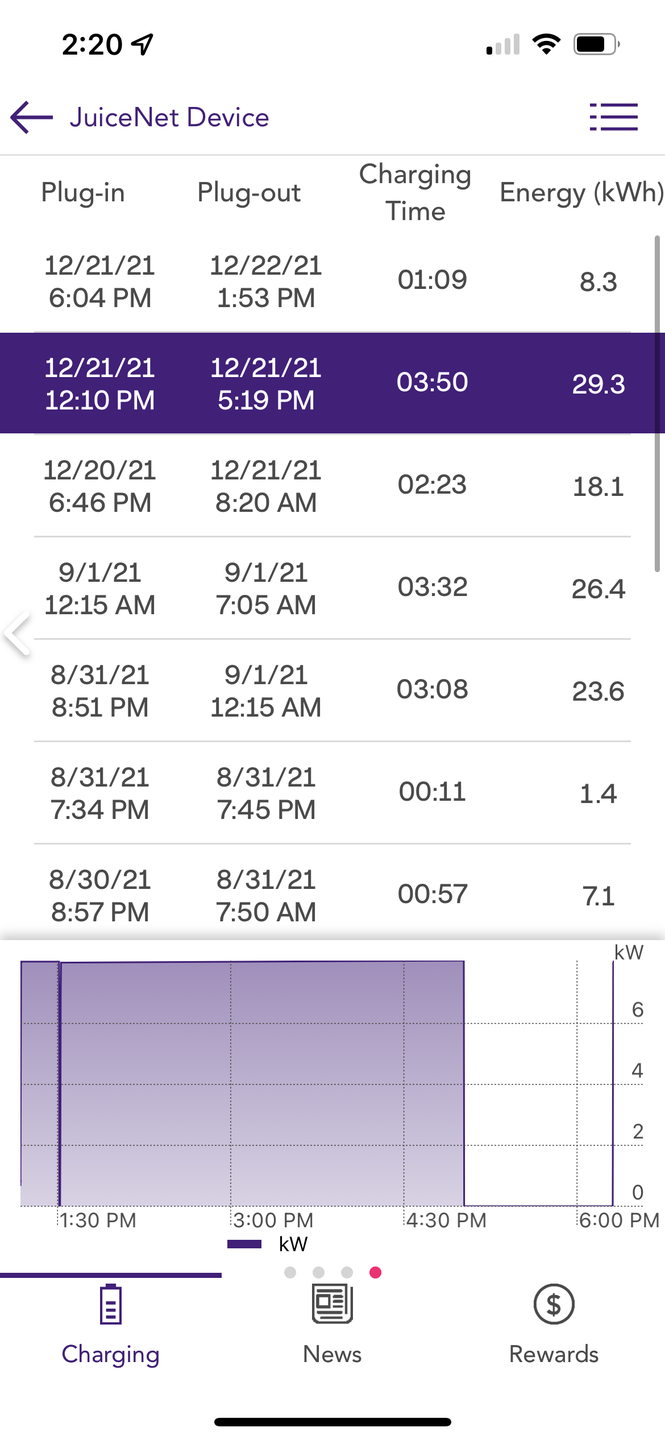
Like the ChargePoint unit, the JuiceBox provides detailed energy output and charge time for each charging session, various adjustable notifications, and the ability to set up customized charge times to take advantage of differing electricity pricing. One difference is that the JuiceBox's vehicle database is more extensive and up-to-date, but it can't match ChargePoint's nuanced utility pricing information.
Best EV Charger on a Budget: Lectron 32 Amp

Lectron 32 NEMA 14-50 Level 2 EV Charger
$318.99
amazon.com
Michael SimariOutput capability: 32/16/13/10 amps (7.7/3.8/3.1/2.4 kW)
Cord length: 21 feet
Cord management: none
This Lectron is one of the cheapest options out there, and there's an even less expensive variant ($200) that flows only 16 amps. Also, a more powerful 40-amp version that's $328. So you can pick which one matches your household outlet and vehicle's charge rate and not spend on unused charging capability. There's no wall mount, but a simple hose reel or hook mounted to the wall could take care of cord management. Even though the Lectron isn't a "smart" unit with Wi-Fi capability, it has a small LCD screen that displays voltage, amperage, charge time, energy (kWh), and temperature.
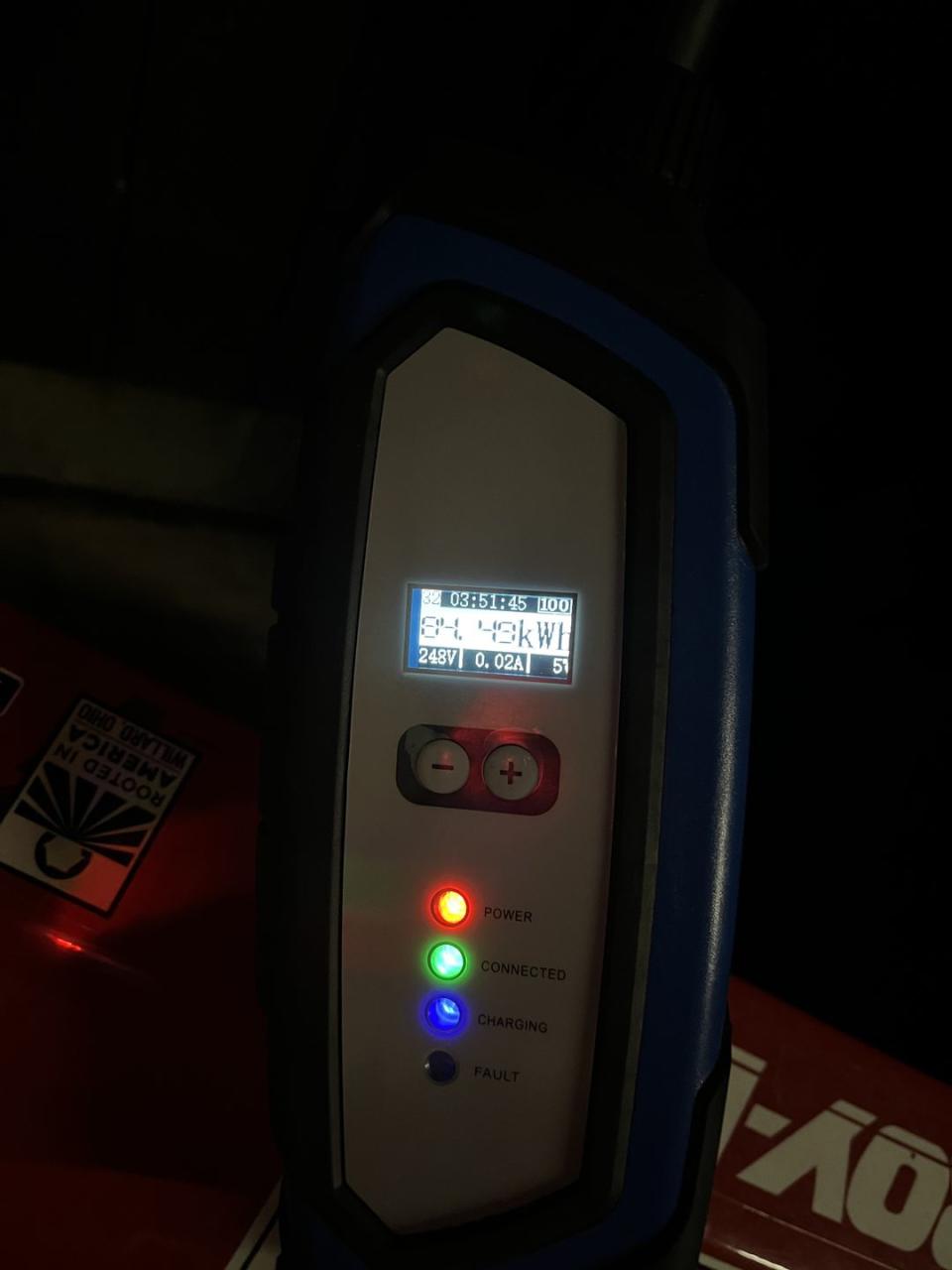
This unit came with no instructions, but with only two buttons it wasn't too hard to figure out that holding down the "+" was how to set the limit on current, which can be adjusted among 10, 13, 16, or 32 amps of output to match your wall circuit. When plugging in, charge time starts over, but the kilowatt-hour readout doesn't, so if you want to monitor individual charges to track your car's efficiency, you have to unplug and replug before every charge. If you want to track your charging fastidiously, one of the Wi-Fi-connected units is probably a better choice.
Also Great: ChargePoint Home Flex EV Charger
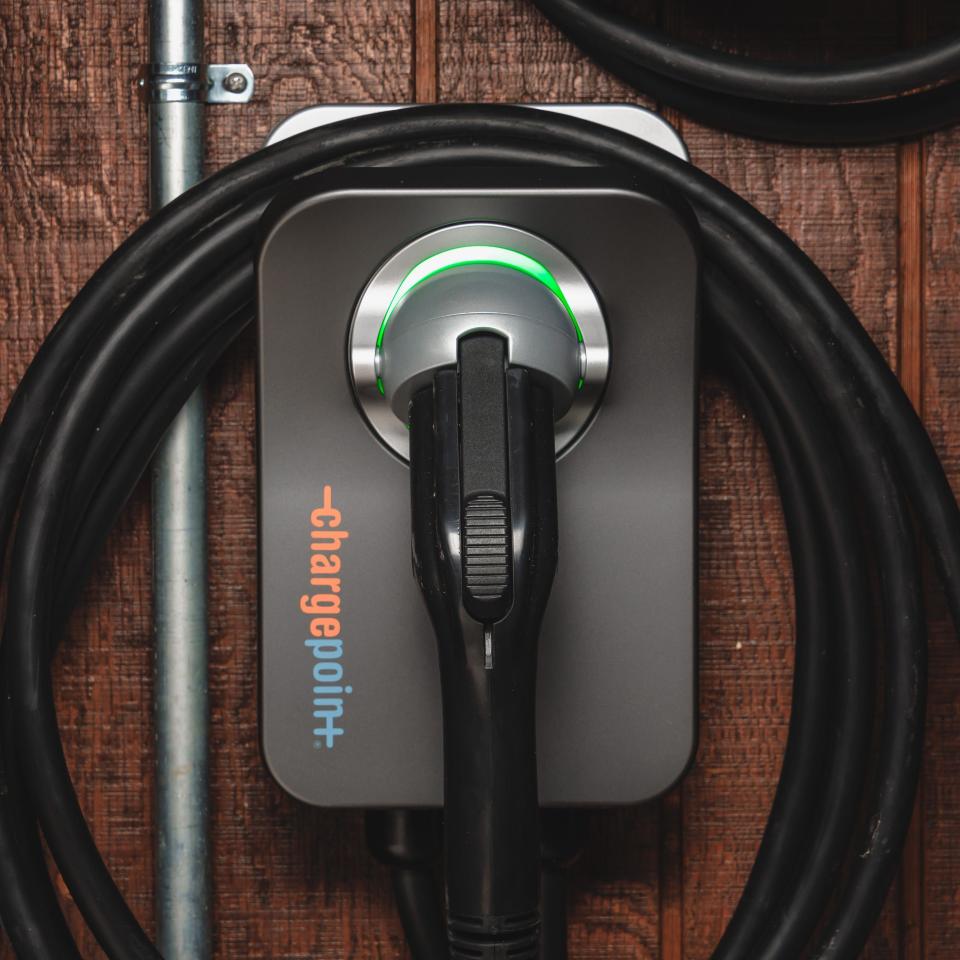
ChargePoint Home Flex Electric Vehicle (EV) Charger
$699.00
amazon.com
Michael SimariOutput capability: 40/32 amps (9.6/7.7 kW)
Cord length: 23 feet
Cord management: built-in
ChargePoint is one of the largest providers of public charging, with thousands of units nationwide. Its Home Flex unit tested here integrates into the same app used to connect to the company's public units. Through the app, you can add your vehicle; then the app tailors the percentage of the battery replenished and number of EPA miles added to your specific vehicle. But ChargePoint's vehicle database isn't as comprehensive or up-to-date as the one from Juice Box. You can see charge-rate graphs and the charge time and total energy output during each charge. It also gives the ability to set charging times to take advantage of variable-cost electricity during off-peak hours (most EVs also allow this to be configured in their settings menu). The ChargePoint app has the most nuanced cost tracking, allowing us to select from among dozens of possible rate plans from our local utility to pinpoint the actual cost down to the penny.
In no particular order, here are the best of the rest:
Tesla Wall Connector EV Charger

Wall Connector
$425.00
tesla.com
Michael SimariOutput capability: 48/40/32/24/16/12 amps (11.5/9.6/7.7/5.8/3.8/2.9 kW)
Cord length: 24 feet
Cord management: built-in
Even if you don't own a Tesla, the company's Wall Connector is a good option. Connecting to a non-Tesla EV simply requires an adapter (such as this $160 one from Lectron) to go between the Tesla-style plug to the J1772 plug type used by every other EV. This third-generation Tesla charging unit does have Wi-Fi capability, which allows for firmware updates but doesn't include any ability to control or monitor charging. But if you do own a Tesla, any of that data and adjustability is available from the vehicle, using a third-party application such as TeslaFi.

The Wall Connector had by far the easiest setup, where you simply scan the QR code on the side of the unit to connect to Wi-Fi and then set the output limit through a web-based interface. Surprisingly, although the Wall Connector is capable of the highest output of our group (48 amps or 11.5 kW), it has the thinnest, most flexible cables. We also find the Wall Connector's sleek shape and glass-like clear top layer the most visually appealing.
Grizzl-E Smart EV Charger
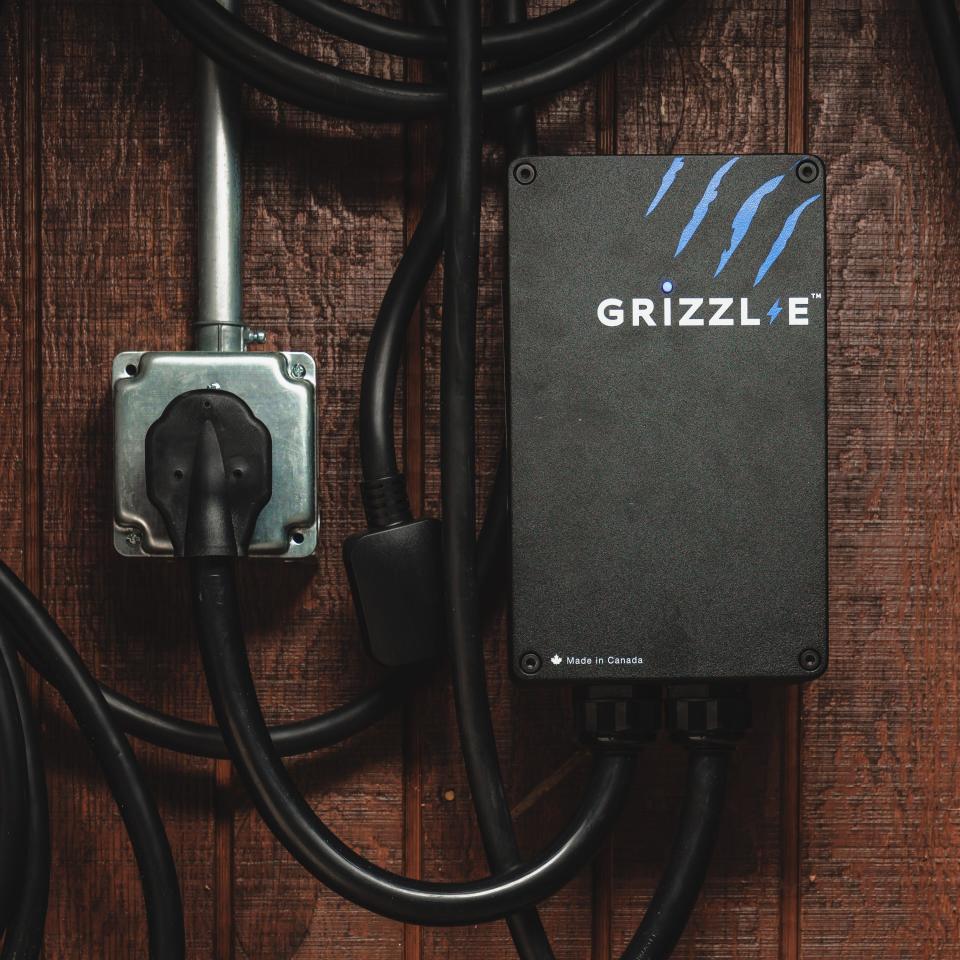
Grizzl-E Smart – Classic NEMA 14-50
$449.00
grizzl-e.com
Michael SimariOutput capability: 40/32/24/16 amps (9.6/7.7/5.8/3.8 kW)
Cord length: 24 feet
Cord management: included wall mount
The promise of the Grizzl-E Smart is that it can theoretically pair with any EV charging app that uses the OCPP (Open Charge Point Protocol) 1.6 and, at $539, it's one of the cheapest smart units. Unfortunately, it took months to get ours to connect. Initially, Grizzl-E said its unit could work with either AmpUp or ChargeLab apps, but now it's only the latter. It appears that Grizzl-E has streamlined the connection process considerably since we first tried using this unit, and we were eventually able to get our unit a firmware update and get it connected to the ChargeLab app.
Grizzl-E touts the ruggedness of its beefy aluminum enclosure, with videos on its website showing a small off-road vehicle running over it (which seems completely unnecessary for a thing that's mounted on a wall in your garage). It also had the thickest cables, making them the most resistant to hanging back on the included wall mount.

Like the other units, the Grizzl-E can adjust among various output levels, but it's most difficult to accomplish in the Grizzl-E, where rather than change it via the app, you have to take off the front cover and toggle DIP switches. But it can also be preordered to a specific setting to save that hassle. The cover also has to be removed to reset the Wi-Fi connection, which we did at least a half-dozen times when trying to get ours to connect.
How We Test EV Chargers
I went down the same path a new EV owner would when putting together this story, starting with installing a dedicated 240-volt outlet in my garage. We of course have charging at the Car and Driver office, but I needed a proper setup at home to support all of the EVs we're reviewing these days. I was able to add a 40-amp circuit to the existing electric service in my house without a pricey upgrade to run additional capacity, so that's why I landed on a 40-amp outlet versus a 50-amp setup. To be able to easily switch among the units, we ordered the NEMA 14-50 plug-in variant of each charging device. (Note: Tesla doesn't sell a version of its Wall Connector with a plug, so to keep our test comparable we wired one in ourselves to connect to our NEMA 14-50 outlet.) We used each of the five units to charge our long-term Tesla Model 3 numerous times over a period of months. We then compared the electricity output from the wall to what the Model 3 reported made it into its battery pack using the third-party (and very cool) TeslaFi software. Despite varying cord lengths and thicknesses, there was no measurable difference in performance or efficiency (which averaged roughly 5 percent charging losses).
FAQs
What are the different types of EV chargers?
Charging capability is categorized into three tiers. Level 1 and Level 2 use 120-volt and 240-volt AC electricity, respectively, which is what your house is wired for. Level 3, also called DC fast-charging, is high-voltage (400 to 800 volts) DC charging that takes place at a dedicated public EV charger and charges far faster. DC fast-chargers cost hundreds of thousands of dollars to install, so it's not something you'd install at home.
Are all home EV chargers the same?
Home-charging equipment is analogous to a USB cable to charge your phone. It connects the electricity in your house to your car, and in that way they're all similar. The main differences are their output capability, typically expressed in either amps (e.g., 32, 40, 48 amps) or power (e.g., 7.7, 9.6, 11.5 kW), which equates to charging speed, and whether or not they are Wi-Fi connected, which typically allows charging to be monitored and controlled remotely via a smartphone app.
What's the difference between Level 1, Level 2, and Level 3 charging?
The charging "Levels" generally refer to charging speed, where Level 1 is extremely slow (think multiple days for a full charge), Level 2 is adequate for at-home use (can charge overnight), and Level 3 is the fastest (a half-hour top-up might add 80 percent charge). Technically, the difference is the voltage at which energy is input into an EV. Level 1 means 120 volts, like a typical household outlet, with a typical charging rate of 1.4 kilowatts. Level 2 is 240 volts (like an electric dryer) and, depending on the amperage of the circuit, can range between 5.8 and 19.2 kW. Level 3 is DC fast-charging, which typically operates at 400 or 800 volts, and the rates can be as high as 350 kW.
Are there tax breaks for EV owners who buy a home charger?
Yes! There's a federal tax credit of 30 percent of your total costs, which is capped at $1000. The cost of the electrical upgrades and wiring to your house qualifies, in addition to the charging unit itself. In addition, there are often additional state or regional incentives, so make sure to check what's available in your area.
Do I need to buy EV charging equipment?
Not necessarily. While you do need a device to connect the electricity from your house to your vehicle, you may be able to get by with the portable charging equipment that came with your vehicle. In some cases, the car either comes with or the automaker sells accessory adapters that allow the portable unit to plug into a 240-volt circuit and provide perfectly acceptable charging speeds, as long as you don't mind leaving it behind in your garage (or regularly loading it in and out of your car).
How do I wire my house to charge an EV and how much does it cost?
A good middle ground is a 40- or 50-amp circuit, which will be able to charge most EVs overnight. EV charging equipment can either connect via a plug or be hardwired into your home's electricity. We suggest going with a NEMA 14-50 outlet; that way the charging equipment simply plugs into an outlet, similar to any other household device. If you move, you can unplug your pricey EV charging equipment and take it with you or easily switch to another unit in the future. And, when not charging, that outlet could also be used for other 240-volt needs, such as an electric heater or a welder.
A dedicated electrical line has to be run from your breaker box to the garage or exterior location you want to install the charging equipment. Qmerit is a company that specializes in these installs and has a nationwide network of electrical contractors to do the work. If your house has enough spare electrical capacity, you may be able to simply run a new line, which might cost a few hundred dollars. If not, additional capacity needs to be added to your house, and that might raise the total to a couple thousand dollars.
What's the difference between a vehicle's onboard charger and an EV charger?
Although many people refer to the products reviewed here as "chargers," technically they are electric vehicle supply equipment, or EVSE. The vehicle's onboard charger is a device that converts the AC electricity from your house to DC energy to be stored in the battery, and it determines the fastest Level 2 charging rate your vehicle can handle. No matter how much electrical output you have at your house, you can't exceed the charge rate limited by the onboard charger.
Why Trust Us
Car and Driver has been testing cars since 1956, and we continue to measure the maximum acceleration, braking, and cornering performance of many hundreds of vehicles every year. In addition, we measure everything from cargo capacity to how much a vehicle's pillars block outward visibility to real-world fuel economy at 75 mph. When you read one of our reviews, you’re getting the value of decades of hands-on automotive experience and knowledge. More recently, we've added new tests to measure the burgeoning class of electric vehicles. Those include a range test at a steady 75-mph highway speed and a fast-charging test from 10 percent to 90 percent state of charge. You can read more about our extensive vehicle testing here. We know and love cars and live and breathe them all day, every day.
We're setting the same standards for our equipment and gear reviews as our vehicle evaluations: We compare similar items, put their performance into context, and tell it like it is. Whether we're reviewing cars, products, or services, our writers and editors select and evaluate items based solely on merit, and we rely on our experience, knowledge, and expert input from contacts throughout the automotive industry to provide the most honest evaluations we can. Most products are purchased; others are supplied for candid assessment. We never accept payola to review or feature products. Car and Driver is committed to our editorial independence; moreover, so is our parent company, Hearst Autos.
Hearst participates in affiliate programs from retailers; if you purchase a product via one of our links, we may earn a commission.


